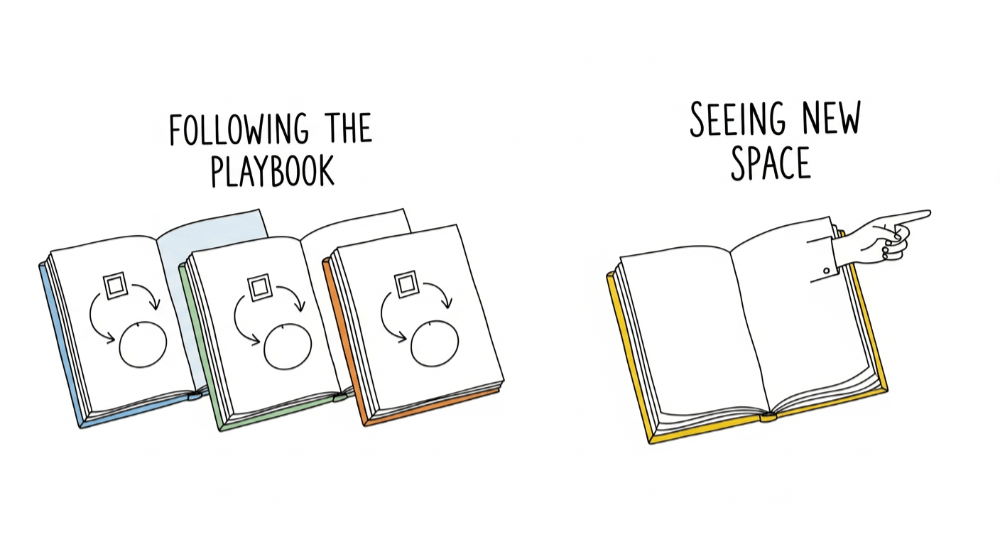Everyone's obsessed with copying Steph Curry's playbook.
The release point. The range. The championship template. The workouts. The form. The whatever, whatever.
So we've got 10,000 brand strategists running the same positioning framework, following the same "best practices," wondering why their clients all look identical.
The thing is, Curry didn't revolutionize basketball by following a playbook. He won by seeing spacing the defense couldn't comprehend before they knew it existed.
I reviewed a positioning deck last month from a SaaS founder. Beautiful framework. Perfect execution of the "Jobs to be Done" methodology. Looked exactly like the template from that $2,000 course everyone's taking.
I asked him what his customers actually say when they recommend his product.
"Um... they say we're easy to use?"
I pulled up his top three competitors' sites. All said "easy to use." All had the same feature comparison tables. All promised "seamless integration."
His positioning was technically correct.
And completely useless.

What happened was that he blindly followed the recipe.
Step one: identify the job.
Step two: map the outcome.
Step three: craft the message. If it didn't work, he blamed the framework. If it worked, he patted himself on the back.
But Curry doesn't shoot threes because the playbook says "shoot from here."
He shoots threes because he reads how the defense is sagging off him, notices the big man is slow on rotations, sees his teammate setting a screen at a specific angle, and understands that this exact combination of factors creates a window that exists for 1.2 seconds.
The shot is the output. The reading is the skill.
Most brand strategists are running plays. The good ones are reading defenses.
When Curry revolutionized the game, coaches said he was breaking basketball. "You can't build an offense around threes." "That's not sustainable." "He's just hot right now."
They were measuring him against the playbook.
He was measuring himself against what actually wins games.
Same thing happened with a client I worked with in fintech. Everyone in their category is positioned around "security" and "compliance."
That's the playbook.
That's what every framework tells you to do.
But when I interviewed their customers, nobody gave a shit about security in their pitch.
They cared that their previous vendor made them look incompetent in front of their CFO. They cared that implementations took 6 months instead of 6 weeks. They cared that they could finally answer their boss's questions without three days of data wrangling.
The transformation wasn't "we're secure." It was "We make you look like you know what you're doing."
We repositioned around that.
Revenue jumped 40% in the next quarter.
We didn’t just follow a framework, we read what the market was actually giving us.
Recipe followers execute steps.
If step three says "identify pain points," they list pain points. If the template says "create a value prop," they fill in the template.
Game readers see patterns.
They notice that every competitor is zigging, so they zag. They observe that customers use different language than the industry uses. They spot the gap between what the playbook says should work and what actually closes deals.
AI is a recipe follower. It'll execute your positioning framework flawlessly.
But it can't read the room.
It can't notice that your competitor just pivoted and left an opening. It can't see that your customers are hiring your product for a job you never designed it for. It can't feel when the market shifted and your messaging is now solving yesterday's problem.
That's some chef-level shit, and that's reading the game.
Now take your current positioning. Now ignore it completely. Call your last three customers who renewed. Ask them this exact question: "What did you tell your colleague when you recommended us?"
Write down their actual words.
If there's a gap between that and your positioning statement, you're following a recipe that doesn't match the taste test.
And taste is the only test that matters.
Your fractional CBO,
Shashank
P.S.
Brand Engine opens again tomorrow.
If you want to learn how to read your market instead of following templates, stay tuned.
